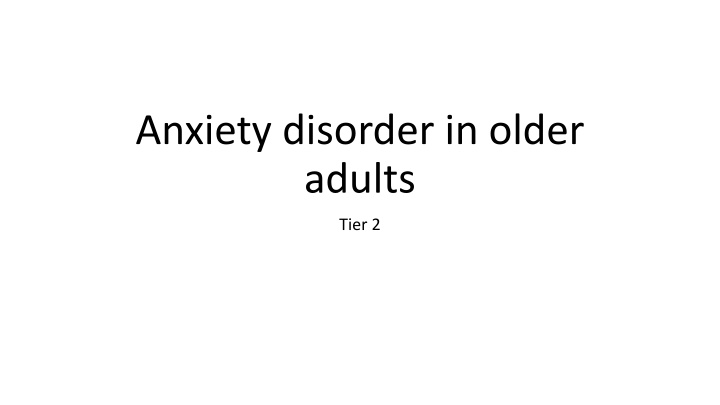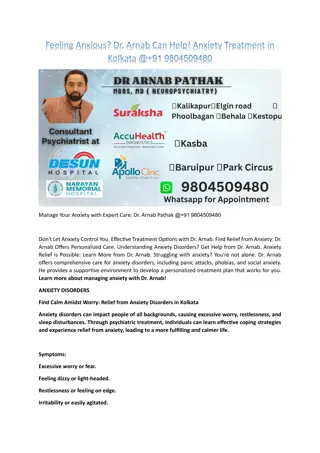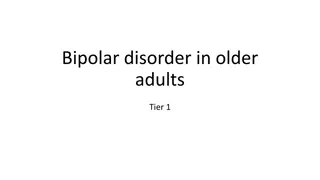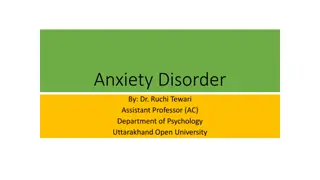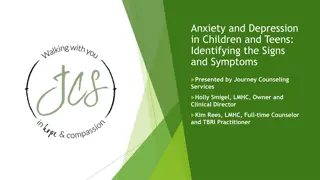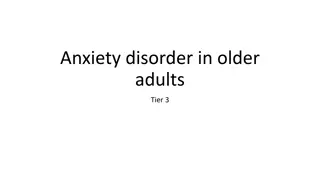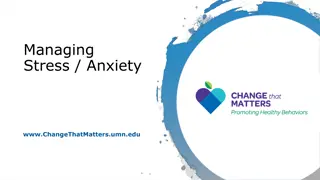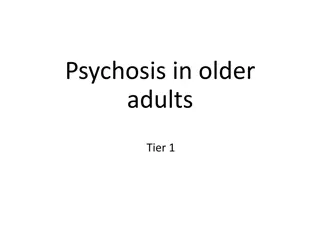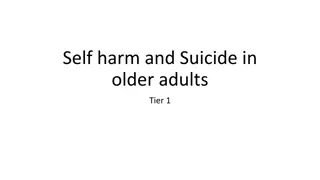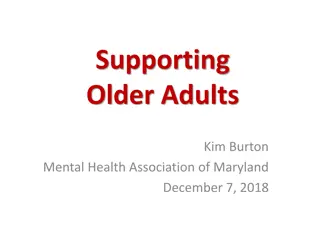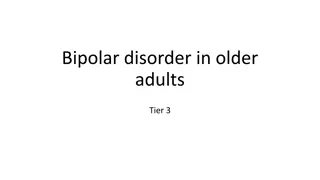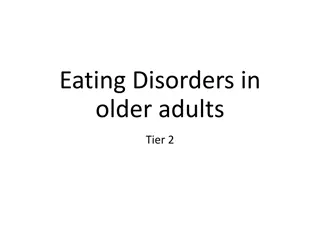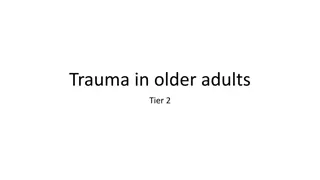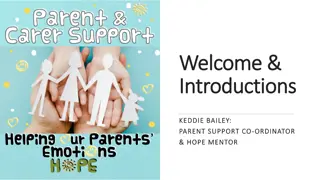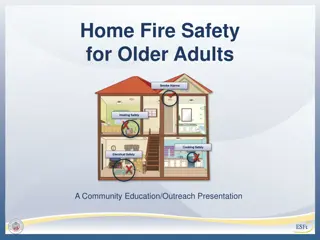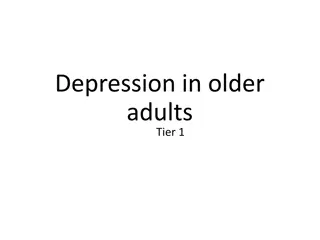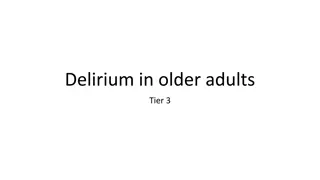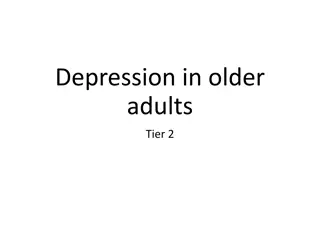Anxiety Disorder in Older Adults: Recognizing Symptoms and Risk Factors
Anxiety disorders in older adults are often unrecognized but common, impacting daily life. Trigger events such as falls or bereavements may worsen symptoms. Risk factors include low education, poor health, and traumatic experiences. Understanding the types and causes of anxiety, along with symptoms like restlessness and poor sleep, can aid in early detection and support for older adults facing anxiety disorders.
Download Presentation

Please find below an Image/Link to download the presentation.
The content on the website is provided AS IS for your information and personal use only. It may not be sold, licensed, or shared on other websites without obtaining consent from the author.If you encounter any issues during the download, it is possible that the publisher has removed the file from their server.
You are allowed to download the files provided on this website for personal or commercial use, subject to the condition that they are used lawfully. All files are the property of their respective owners.
The content on the website is provided AS IS for your information and personal use only. It may not be sold, licensed, or shared on other websites without obtaining consent from the author.
E N D
Presentation Transcript
Anxiety disorder in older adults Tier 2
Anxiety disorder Anxiety, although experienced by most people, does not usually develop into an anxiety disorder. Transient anxiety is normal, however when anxiety starts to affect daily life this indicates a problem. Anxiety disorders are commonly unrecognised or undiagnosed and when anxiety disorders coexist with depression, the depressive episode may be recognised but the underlying anxiety disorder may be overlooked. Depression and anxiety or anxiety disorders are commonly experienced together in some form, but can also be experienced alone. There are several terms used to describe the combination of depression and anxiety, including mixed anxiety and depressive disorder and depressive anxiety
Anxiety disorder in older adults Anxiety disorder is one of the most common psychiatric disorders in older adults About 1 in 5 older adults have anxiety disorder Older adults in comparison to younger adults often report physical health symptoms Most older adults with anxiety would have had anxiety symptoms when they were younger There could be trigger events for anxiety presentations falls, admission to hospital, recent bereavements and sudden loss
Risk factors for Anxiety Disorder in older adults Female Low education attainment Lower socio-economic status Single or widowed Poor physical health, including self-rated poor health Traumatic event (especially in childhood) Neuroticism Cognitive disorder Presence of major illness in partner
Types of anxiety disorder Generalised anxiety disorder Phobias Obsessive compulsive disorder Post traumatic stress disorder (see details in trauma slides) Panic disorder
Causes of anxiety There can be a number of causes for anxiety symptoms. Some of them are listed below Depression Anxiety may be a symptom of dementia Medical illness Medications Alcohol and drug misuse
Symptoms of anxiety Restlessness and or agitation Poor sleep Poor appetite Nervousness Irritability Tachycardia Dry mouth Nausea Sweating Muscle pains Fatigue Difficulty in sustaining attention and poor concentration Inability to retain information
Actions to take Ask GP for review if you notice these symptoms - as the symptoms may be due to many treatable causes such as medications, physical illness, depression or anxiety Ensure that the person is eating properly - attempt to record the amount of food eaten and fluid taken Check how the person is sleeping and if needed give sleep hygiene advice Offer reassurance
What to Say and How to Act Talk in a neutral tone Use very simple words and sentences and speak slowly Give one instruction at a time If asking for something, please give no more than two choices at a time Involve relatives and friends Encourage them to do activities they enjoy
Treatments Treatment options include a combination of: Normalise sleep, diet and exercise Psychological/talking therapies Medications- antidepressants can help
Complications of Generalized anxiety disorder Complications include serious disability and impaired quality of life, impaired social and occupational functioning, increased risk of major depression, social anxiety disorder, and alcohol and drug misuse. Physical health problems are more common in people with GAD. These include chronic pain syndromes, asthma or chronic obstructive pulmonary disease, and inflammatory bowel disease. Suicidal ideation and attempts are also more prevalent in people with GAD compared to the general population and this risk increases further in those who also suffer from major depression
Resources MPC_07_01 Anxiety | MPC_07_01 Anxiety (mindedforfamilies.org.uk) This is an easy to access website for older adults and their families which has good information on symptoms ,reasons and treatments for anxiety
